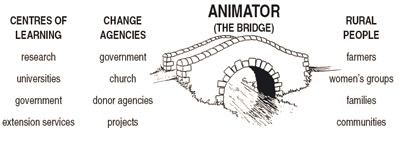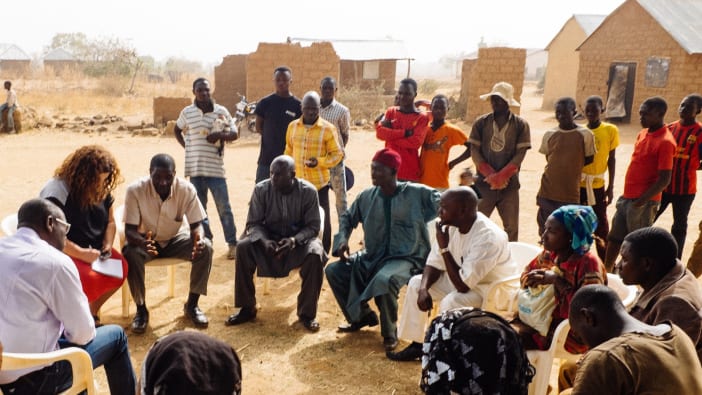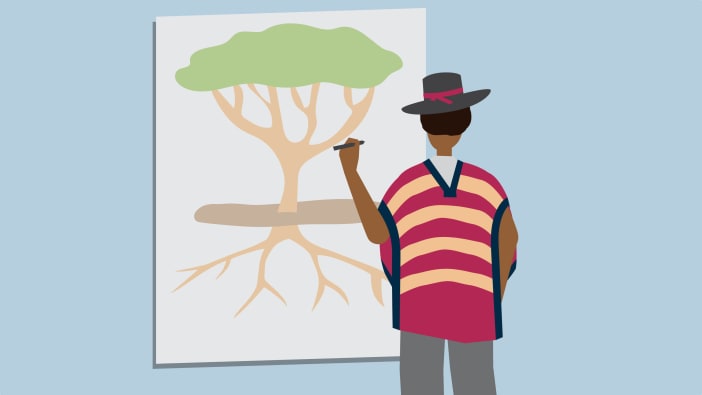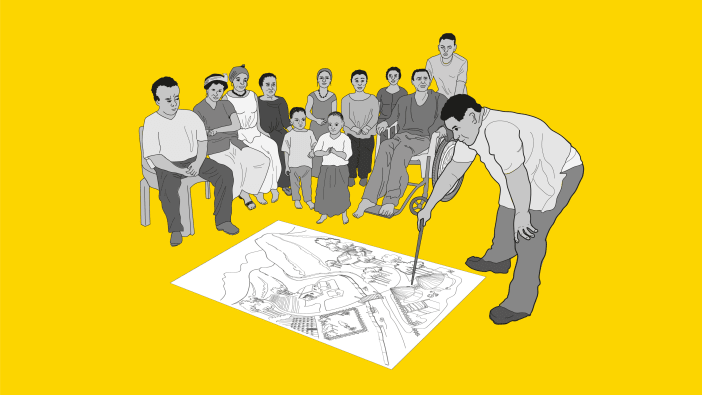The animator is often the link person in sharing skills or training. It is not the animator’s job always to have the answers to problems. Research stations and universities may have some of the answers. Rural people have rich resources of wisdom, knowledge and skills accumulated over centuries. The animator is a bridge by which problems and answers can move between the two. Learning always needs to be a two way process.
The role of the animator
- communicator
- motivator
- teacher
- administrator
- enabler
- activist
- educator
- leader
- organiser
- provider
- facilitator
- intermediary
- listener
- friend
- catalyst
These words (and you may be able to think of others) all suggest a person in a key role, meeting with people at different levels and needing skills in teaching and communication, management and leadership, helping, encouraging and just being a true friend. It is not an easy calling to be the man or woman ‘in the middle’. It needs a person who is trained, gifted, highly motivated and who is compelled by real love to serve the needs of others.
We see from the gospels that Jesus used many different methods to communicate with people. Each method was appropriate to the audience concerned. Often he used teaching aids, such as parables or real objects, to make his meaning clear and to help people remember his message. We see him acting quite differently with large crowds, with the small group of his disciples and with individuals in need. (Read Matthew 13:3–4, Mark 9:30–31, John 4:7.)
The animator’s work in training
The animator’s role is much more than simply passing on information. An animator is concerned with helping people learn – gaining knowledge, new skills and changing attitudes. So animators are also called to be trainers. They need to understand the learning process and be able to train others.
What do we mean by training?
- Training aims to prepare the learners for a particular task or job. It will always have clear, specific objectives.
- It involves both learning theory and carrying it out in practice.
- It involves changes in people – in particular, in their knowledge, skills and attitudes. Changes in attitude usually come slowly.
- It involves balanced human development - bringing about mental, physical and spiritual changes. In other words, real human development will involve mind, body and soul. Training should also be balanced, focusing on all three types of change, not just on one or two.
- It involves improving existing skills. Usually trainees already have some skills but want to learn more – to build up the skills they have. The animator can encourage this process.
- Training involves the transfer of learning. New knowledge, skills and attitudes must be transferred to everyday life. Can the things learned in the ‘training environment’ be put into practice in real life situations? All training must lead to action. This is the most important test of effective training.
Choosing a method
The methods used by trainers can be divided into three main groups (see box). For effective learning to take place, trainers need to use a combination of different methods. People learn better when the ‘message’ is repeated in various ways. Presentations of new ideas and skills can be followed by participatory and exploratory sessions.
In order to use a variety of methods, trainers need to be well trained. They need to understand that their role will change with different training methods:
Presentation Methods require a skilled teacher.
Participatory Methods require a trainer who is also a willing learner.
Exploratory Methods require a facilitator and organiser.
GROUP EXERCISE Plan training on a particular subject. List all the preparations and materials needed to lead three training sessions about this subject – the first using presentation methods; the second, participatory methods; and the third session using exploratory methods.
With thanks to RURCON for permission to use material from The Link Person (reviewed on 'Resources' page).
Ian Wallace has many years of experience in agricultural training. He is a lecturer in the Agricultural Extension and Rural Development Department, Reading University, 3 Earley Gate, Whiteknights Road, Reading, RG6 2AL, UK.










